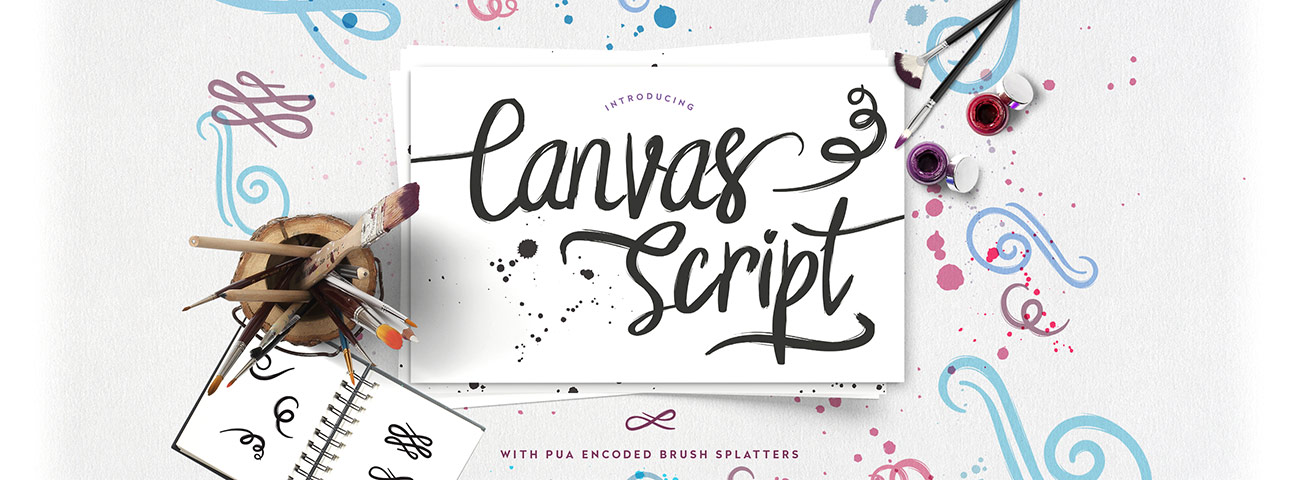
You call them on your drawing context object, and you pass in three arguments: Now, the way you use both of these methods is nearly identical: context.fillText("my text", xPosition, yPosition) Ĭontext.strokeText("my text", xPosition, yPosition)
#Canvas text fonty code#
Let's turn all of the English words in the previous section into some sweet code that showcases what strokeText and fillText have to offer. If you don't have such a document, just create a new one with the following markup: Īll this sample does is give you a 550px by 350px canvas element that we will use in the next couple of sections to get our text to appear. To do this, take sure you have an HTML document with a canvas element locked and loaded. Now that you know this, let's wrap up this awkward introduction and get our hands dirty with some code! The fillText method allows you to display a solid / filled-in version of your text instead: With the strokeText method, you end up drawing an outline of your text: BUY ON AMAZON From Text to Pixelsįor getting text to appear in our canvas, we will primarily be using two methods: strokeText and fillText.
#Canvas text fonty how to#
Headings are great for breaking text up into sections.įor more Canvas typography and font tips and tricks, including how to use the RCE and HTML editors, blockquotes, abbreviations, etc.To kick your canvas skills up a few notches, everything you see here and more (with all its casual clarity!) is available in both paperback and digital editions. Of the options, the web design preference is to use bold before italics and underline. These are picked up by screen readers for those who need accessible accommodations. However, don't be tempted to go overboard with changing the color and size of the text instead try to make use of bold, italics, underline, and headings (H2 -H4). As Syndrome stated:Īlthough we want to maintain consistency, it is perfectly fine to emphasize portions of text. However, when such is overused then not only is the novelty nullified, but it can be deleterious to the overall experience as it creates too many distractions. It is okay to occasionally employ (accessible) novelty in order to draw attention to a very specific bit of text.

People may be tempted to adjust the size, color, family, placement, headings, etc. It is tempting to change up the look and feel of the typography, whether from one page to another or within a page. One trick you can employ to keep the lines from running too long is to use a div in the HTML editor to constrain the width. The Baymard Institute researches user experience, and they recommend keeping line length to under 75 characters for an optimal line length. Others are viewing the content on computer screens and perhaps very large monitors (or even TVs or projectors). Some of our students view the content on phones or tablets, in which case line content is not is not so much an issue. A Canvas page is not a flyer or billboard, but we still can work to keep our lines short. When you glance at billboards, magazines, posters, and flyers, you'll notice that their content is most effective when lines are short and perhaps bulleted. Interestingly, although it is often ridiculed, there is research claiming that Comic Sans is a good font for accessibility and dyslexia. Other research indicates that serifs can be distracting and can prevent readers from efficiently reading at length.

Some research purports that the serifs help lead the viewer from one letter to the other, creating a flow throughout the sentence. This likely reflects the variety, variations, and ornamentation of fonts on the market.

The research on the effectiveness serif vs. A traditional serif font would be Times New Roman, whereas common sans serif fonts are Calibri and Helvetica. The serifs are the little embellishments that you sometimes find at the end of fonts. Here are some guidelines for deciding which fonts and typography techniques can help determine which route to take when designing Canvas content. When fonts are easy to read, then readers are more likely to read more of the content. Fonts can be fun, casual, modern, professional, etc., but one of the most important things for instructional designers to consider is that the content on the page is easy to read and understand. The fonts we choose can help us deliver our messages, and they can even evoke reactions from our readers.Īn especially important aspect of typography and fonts in education is readability. Typography is an important aspect of our web interfaces and helps us express creativity and meaning when we are communicating our content to our students.


 0 kommentar(er)
0 kommentar(er)
